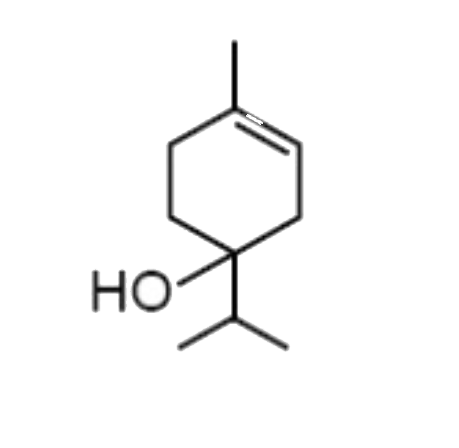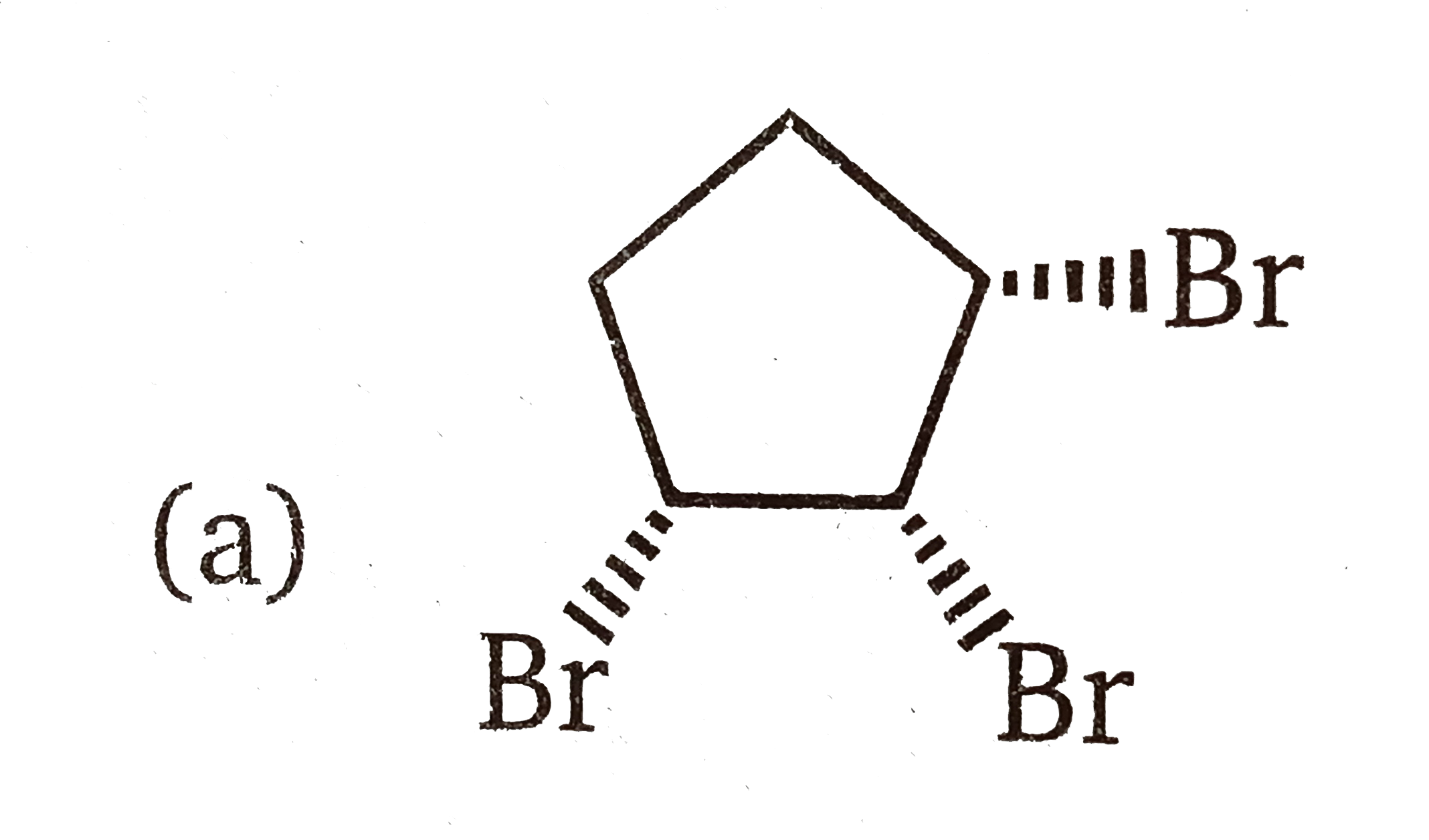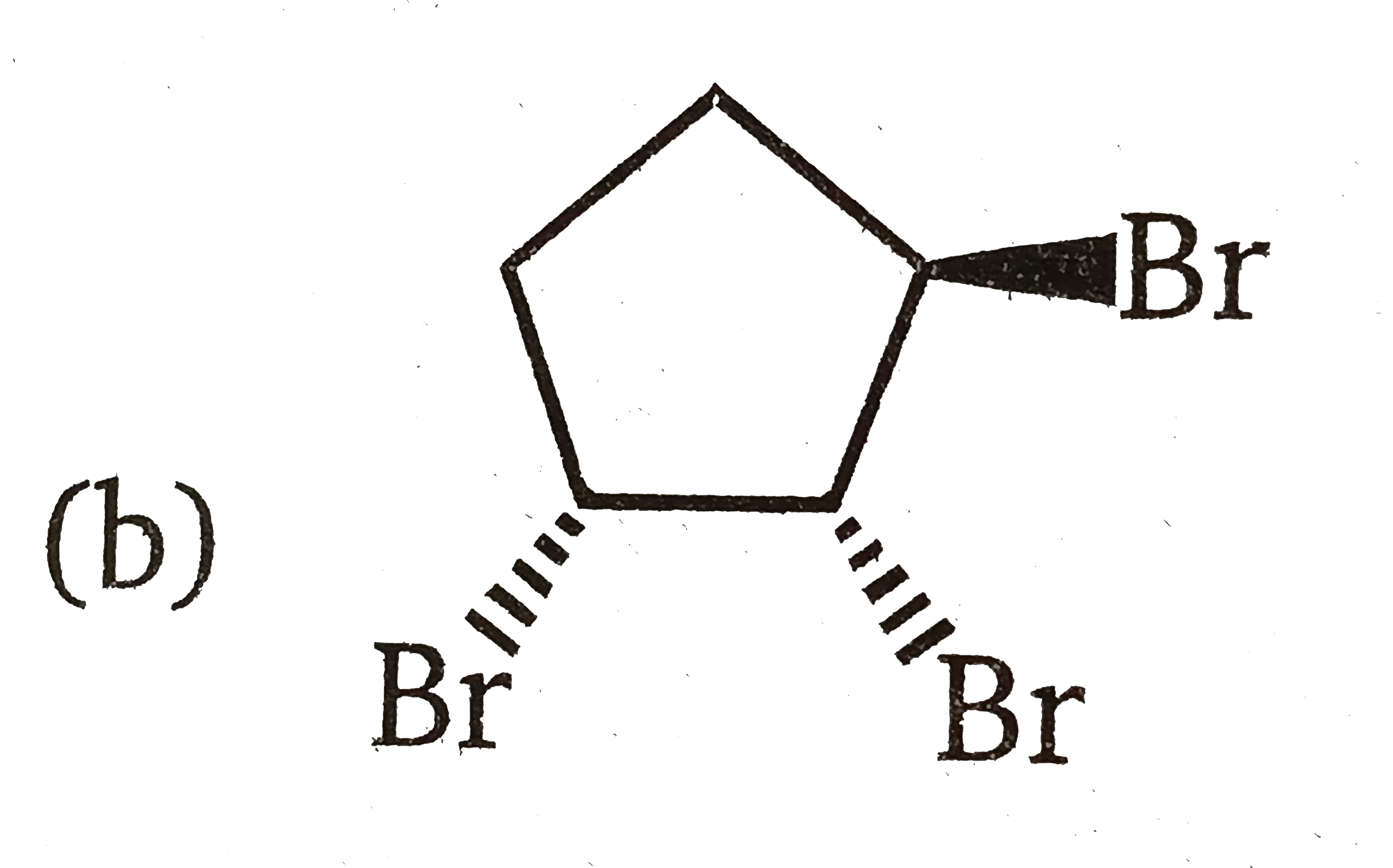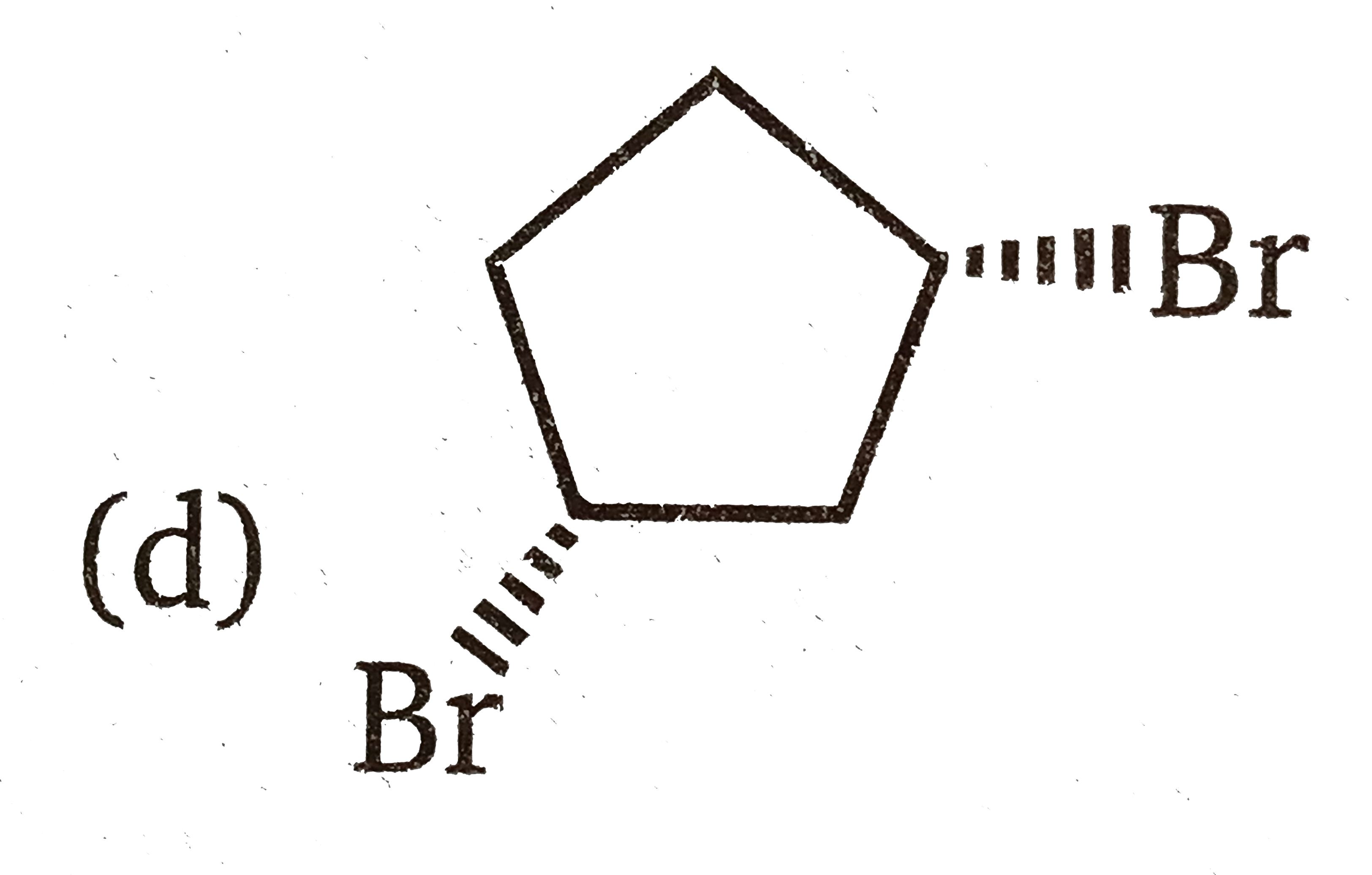An organic halogen compound X on hydrolysis using aqueous KOH gives Y which liberates H2 gas with metallic sodium. X is optically active whereas Y does not rotate the plane polarized light, so X is possibly
CH3−CH2−CH2−CH2−Cl
CH3−CH3∣−∣BrCH3
CH3−CH2−H∣C∣OH−CH3
CH3−C∣CH3H−CH3∣C∣Br−H
The correct Answer is:D
Topper's Solved these Questions
- HALOALKANES AND HALOARENES BOOK - MTG GUIDECHAPTER - HALOALKANES AND HALOARENES EXERCISE - AIMPT/NEET
10 Videos
- HALOALKANES AND HALOARENES BOOK - MTG GUIDECHAPTER - HALOALKANES AND HALOARENES EXERCISE - NEET CAFE TOPICWISE PRACTICE QUESTIONS
93 Videos
- GENERAL PRINCIPALS AND PROCESSES OF ISOLATION OF ELEMENTSBOOK - MTG GUIDECHAPTER - GENERAL PRINCIPALS AND PROCESSES OF ISOLATION OF ELEMENTSEXERCISE - AIPMT/NEET (MCQs)
10 Videos
- ORGANIC COMPOUNDS CONTAINING NITROGENBOOK - MTG GUIDECHAPTER - ORGANIC COMPOUNDS CONTAINING NITROGENEXERCISE - AIPMT/NEET MCQs
21 Videos
Similar Questions
Terpinen - 4 - ol is an active ingredient in tea tree oil has the following structure

The correct observations for terpinen - 4 - ol is/are
I. It rotates the plane of plane polarized light.
II It does not rotates the plane of plane polarized light
III. On reaction with NaBranH2SO4 , it gives a di bromo compound
IV On ozonolysis it gives a compound with molecular formula C10H18O3.
View SolutionA cyanohyrdrin of a compound (X) on hydrolysis gives an α-hydroxy acid which shows optical activity after resolution . The compound (X) is:
View Solution
Knowledge Check
(R)-3-bromocyclopentene (shown below) reacts with Br2/CCl4 to form two products, Y and Z, Y is not optically active (does not rotate plane-polarized light). What is the structure of Y?
 A
A B
B C
C D
D
(R)-3-bromocyclopentene (shown below) reacts with Br2/CCl4 to form two products, Y and Z, Y is not optically active (does not rotate plane-polarized light). What is the structure of Y
 A
A B
B C
C D
D
An inorganic compound (X) on hydrolysis produces a gas which on treatment with sodium followed by its reaction with ethyl chloride forms another compound (Y). Compound (Y) on heating with Pd catalyst gives (2Z)-pent-2-ene as major product. Hence the inorganic compound (X) is
ATl4CBBaC2CSiCDMg2C3
A cyanohydrin of a compound (X) on hydrolysis gives an α- hydroxy acid which shows optical activity after resolution. The compound (X) is
View SolutionAn organic compound X reacts with exces of HI to give Y. Further Y can combine with sodium metal to form ethane, then what are X and Y ?
View SolutionHydrolysis of BCl3 gives X which on treatment with sodium carbonate produces Y, X and Y, respectively, are
View SolutionAn organic compound X having molecular formula C4H11N reacts with p-toluene sulphonyl chloride to form a compound Ythat is soluble in aqueous KOH. Compound X is optically active and reacts with acetyl chloride to form compound Z. Identify the compound Z.
View SolutionAn organic compound X having molecular formula C3H11N reacts with p-toluene sulphonyl chloride to form a compound Y that is soluble in aqueous KOH. Compound X is optically active and reacts with acetyl chloride to form compound Z . Identify the compound Z
View Solution
